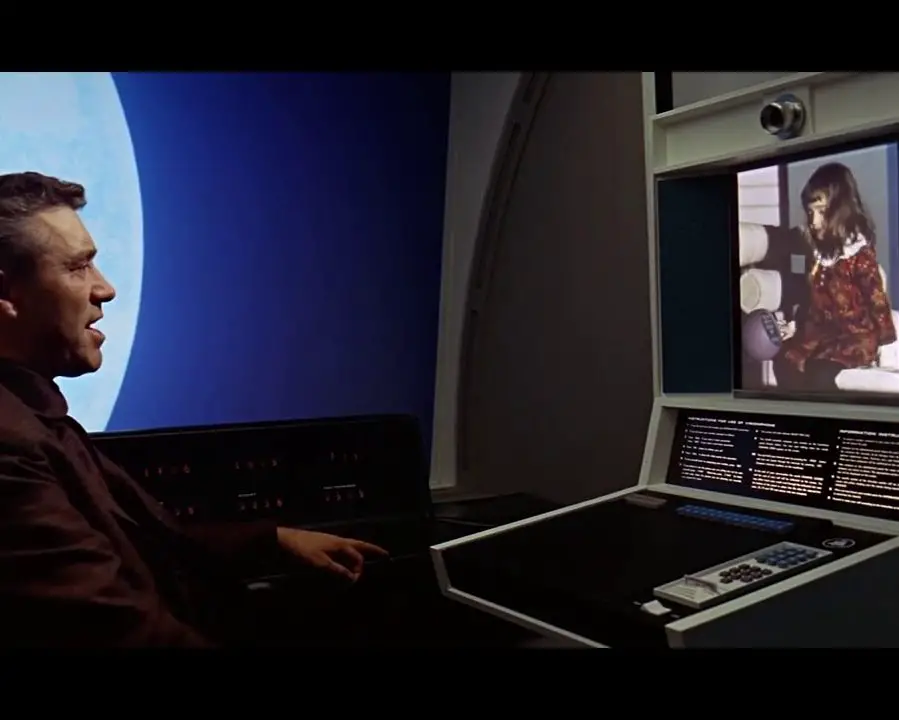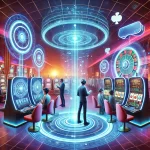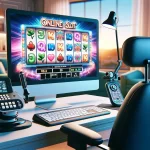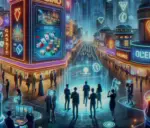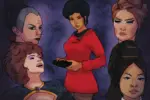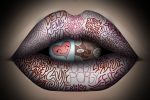Science fiction as a genre is recognized for its frequent inclusion of futuristic technologies, both fantastical and scientifically plausible. Sometimes, these technologies that authors and directors envision can move from the realm of impossibility and become a reality. With the advancement of technology, many predictions have turned out to be right — in some cases, eerily so. A surprising number of everyday items and modern knowledge were once just fictional ideas; here’s a look at some science fiction predictions that came true.
1. FaceTime
The 1968 movie “2001: A Space Odyssey” was an ambitious and groundbreaking film that exposed the world to technological ideas that seemed unthinkable at the time. The plot is centered around an artifact that connects past and future events and is based on a short story by Arthur C. Clake, a renowned science fiction writer. When it was released in 1968, there was no such thing as video calling. There are many absurd technologies in the film, but many of them were eventually invented, specifically FaceTime. One of the people on the space station video calls their family down on Earth in the movie, foreshadowing astronauts in the 21st century.
2. Moon Landing
Long before Neil Armstrong voiced his famous line as he set foot on the Moon, Jules Verne wrote the novel “From Earth to the Moon” in 1865. Throughout history, countless individuals have gazed at the moon and fantasized about visiting it. What made Verne’s science fiction story distinct was that he envisioned a spacecraft shaped similarly to Apollo 11. Also, ironically, both Verne’s characters and the Apollo program launched from Florida.
3. Mobile Phones and Tablets
Of all the things listed here, phones and tablets are among the most widespread today. The original “Star Trek” featuring William Shatner includes handheld mobile phones without cords, and in “2001: A Space Odyssey,” the characters use tablets. It wouldn’t be until decades later that the first phones and tablets would debut.
4. The Internet
Yes, the highly popular, addicting and life-essential tool called the internet was foretold through science fiction and by an unexpected person. William Gibson’s 1984 novel, “Neuromancer,” written just before the internet’s dawn, predicts the World Wide Web among other technologies. Far before that, though, in 1898 Mark Twain wrote a short story about a concept similar to the internet. Imagine a world where his thought never came to fruition.
5. Antidepressants
Probably one of the most surprising things on this list is antidepressants. The science fiction novel that predicted using such drugs is Aldous Huxley’s “Brave New World” in 1932. The antidepressants we have now may differ in usage and effects, but Huxley can still be credited with thinking of them before they actually came to be.
6. Earphones
Ray Bradbury’s 1953 science fiction novel “Fahrenheit 451” depicts thumb-sized earphones called “seashells,” radically different from that era’s large, bulky headphones. Earphones like AirPods and Beats are now essential devices that most people cannot live without. Like mobile phones, small earbuds would seem like a foreseeable invention to modern readers, but it took another 50 years for the devices to first appear.
7. Self-Driving Cars
Self-driving cars have yet to reach the roads unassisted and unmonitored. However, there are plenty of artificial intelligence devices and features in cars that automate driving. Many companies are still working on perfecting self-driving vehicles, and in practice, they are a (albeit imperfect) reality. A few science fiction sources foresaw this invention long before it arrived: Issac Asimov, for example, predicted vehicles with “robot brains” in 1964. Also, the 1990 movie “Total Recall” starring Arnold Schwarzenegger features self-driving cars.
8. Transplants
In 1818, author Mary Shelley predicted technology capable of organ transplants that could cure death. Her novel “Frankenstein” is widely considered the first recognizable science fiction story, and it contains many elements that present futuristic technologies, one of them being the organ transplant.
9. Credit Cards
Yet another tool people use daily is credit cards. Concepts from Edward Bellamy’s 1887 novel, “Looking Backward,” and later George Orwell’s “1984” in 1949 are comparable to them. The widespread usage of credit cards didn’t come until the second half of the 20th century.
10. Genetic Engineering
Charles Darwin wrote about “descent with modification” during the 1800s, and Gregor Mendel did a rudimentary form of genetic engineering with pea plants in the same century. Still, the type of genetic engineering done in the 21st century is more complicated, and humans can now be genetically altered. Science fiction used human genetic modification as a plot device before CRISPR and other technologies ever surfaced. “Brave New World” also depicts a world where humans are genetically altered to fit classes.
11. Atomic Bomb
Perhaps the most terrifying science fiction prediction to become a reality is the atomic bomb. Before World War II, such weapons were theorized but never put to the test. However, an author speculated on bombs of similar magnitudes and composition well before then. H.G. Wells, another big name in science fiction, wrote about nuclear fallout and the devastating effects atomic weapons could have in 1914. His novel “The World Set Free” includes a uranium-based bomb deployed via plane, eerily similar to the real-life American bombs dropped on Japan during the war.
12. 3D Printers
A more modern piece of machinery, 3D printers, existed in science fiction before they ever hit the drawing board or market. In the 1990 film “Darkman,” a 3D printer is used to fix the hero’s disfigured face. Simultaneously, “Star Trek: The Original Series” presented a slightly different kind of printing where food and items could be atomically created in a replicator. While today’s commercialized 3D printers can’t replicate food just yet, some can print biological material.
13. Virtual Reality
The 1992 film “Lawnmower Man” imagined virtual reality devices and headsets pivotal to the movie. The headsets were similar to those seen today. Another author who theorized that the future could contain computer-generated realities was Philip K. Dick in a 1977 conference. He also talked about a world akin to the movie “The Matrix.” Amid all these predictions that have come true, let’s hope that particular thought of his stays a thought.


